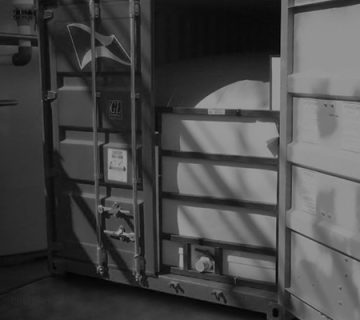What is cutback bitumen?
Cutback bitumen is a range of binders that are produced by blending (mixing) penetration grade bitumen and a hydrocarbon solvent, such as paraffin or mineral turpentine. When the solvent has evaporated, the binder returns to its original penetration grade to tie the particles together. Cutback bitumen gets its name from the solvent that is involved in the process, because the solvent “cuts back” or evaporates, leaving behind the binder to “get on with the job”. The solvent used in cutback bitumen is called the “cutter” or “flux”.
Three types of solvents are used for the blending process: slow-curing, medium-curing or rapid-curing solvents. The choice of the solvent determines the rate at which the bitumen will cure when exposed to air. A rapid-curing (RC) solvent will evaporate faster than a medium-curing (MC) solvent. Curing relates to the evaporation rate of the solvent which influences the setting time of the bitumen. The viscosity of the cutback bitumen is determined by the proportion of solvent added: the higher the proportion of solvent, the lower the viscosity of the cutback. Less heat is required to liquefy cutback bitumen than penetration bitumen, making it easier to use at lower temperatures. Typical cutback bitumen are MC 30 and RC 250. The letters in the name refer to the curing action of the solvent, and the number to the viscosity of the binder. The advantage Cutbacks have over Emulsions is a much higher residual Bitumen percent, typically over 80% compares with over 40-65% for Bitumen emulsions.
Loss of high-energy products
The petroleum solvents used require higher amounts of energy to manufacture and are expensive compared to the water and emulsifying agents used in emulsified asphalts.
Manufacture of cutback bitumen
Cutback bitumen are manufactured by blending either 70/100 pen or 160/220 pen bitumen with kerosene to comply with a viscosity specification. In the UK, cutback bitumens are specified and designated by the flow time (in seconds) through a standard tar viscometer (STV)1611. The majority of cutback bitumen is used in the surface dressing but a significant amount is also used for the Manufacture of both standard and deferred set asphalts. In addition to STV tests and solubility, cutback bitumen have to comply with a distillation specification I621 and a penetration requirement on the residual bitumen. AASHTO specifies three groups of cutback bitumen: rapid curing (RC) where petrol/gasoline is used as a solvent, medium curing (MC) containing kerosene and slow curing (SC) made with diesel oil. The viscosity is measured with a capillary tube viscometer at 60C. The flow through the viscometer is induced by the gravity, and vacuum is not needed. The viscosity is expressed in centistokes whereas, for pure bitumen, the viscosity is expressed in poise. The units of poise and strokes are related to each other through the density of the tested material. The British Standard provides specifications for three viscosity grades of cutback bitumen intended for use in surface dressings. Measurement is with a discharge viscometer, and viscosity is defined as the time in seconds for 50millilitres of the binder to flow through a standard orifice at 40C.
Specification of cutback bitumen
- Cutback bitumen is a blend of penetration grade bitumen and petroleum
- Solvents
- The choice of the solvent determines the rate at which the bitumen.
- Will “set up” or cure when exposed to air.
- A rapid-curing (RC) solvent will evaporate more quickly than a medium-curing (MC) solvent.
- The viscosity of the cutback bitumen is determined by the proportion of solvent added – the higher the proportion of solvent, the lower is the viscosity of the cutback.
- The solvent used in cutback bitumen is sometimes also referred to as the “cutter” or “flux”.
- When the solvent has evaporated, the binder reverts to the original penetration grade.
Advantage of cutback bitumen
It can be applied at lower temperatures than penetration grades because of its lower Bitumen Solvents viscosity. A disadvantage is that cutback bitumen consumes non-renewable energy resources which are ultimately lost through evaporation.
Applications of Cutback Bitumen in Bituminous (asphalt) Pavement Construction and Maintenance
It is intended to be absorbed by the top layers of the base and provide a surface more easily `wetted` by a subsequent bituminous covering. Generally, primers are applied at rates between 0. Cutback bitumen is suitable for priming are also used for tack coats, which are applied to an underlying surface to help with the adhesion of subsequent asphalt layer.
Prime Sealing
Where temperatures are too cool for an effective priming operation, or where traffic is likely to upset a primed surface before the final seal can be sprayed, a primer seal can be used to give adequate protection of the pavement for periods of up to 6 to 12 months.
Spray Sealing
Cutback bitumen is mostly used extensively in sprayed sealing applications, particularly in cooler weather where they provide improved initial stone retention due to their lower viscosity. Typically, a single application of the appropriate cutback bitumen is sprayed onto the primed pavement onto which aggregate is laid.
Cutback bitumen standard
• ASTM D 2026, D 2027 and D 2028 for Slow, Medium and Rapid Curing Cutback
• AASHTO M 81, M 82 for Rapid and Medium Curing Cutback
• EN 15522 Cut back and Fluxed Bituminous Binder
Petro Bitumen Company is a supplier and exporter of high quality all grades cutback bitumen with best prices in correspondence to ASTM D2026, D2027, D2028, AASHTO M82-75 (2008), AASHTO M92-92 (2008). For any inquiries, please contact our sales team on info@petrobitumen.com
USES OF CUTBACK & EMULSION BITUMEN IN DIFFERENT SYSTEMS OF ROAD MAINTENANCE
| System | Description & Uses | Recommended Product |
| Surface Dressing | An application of binder on the road surface by distributor followed by a covering of aggregates/chippings spread by hopper grittier. Can be a single or double-layer surface dressing. | Cutback: MC -3000 |
| Prime Coating | Normally a slow setting emulsion or cutback is used for better penetration purposes to seal off the road base. The rate of application can vary from 0. 4 liter/m2. | Cutback : MC-30 MC -70 |
| Tack Coating | A very light application of binder –hand or machine sprayed –to ensure bonding between the existing layer and the new overlay. The rate of application is normally between 0.25-0.7 liter/m2, depending on the surface being sprayed | Emulsion: K1-40 : RS-1K: RS-2K |
| Semi– Grouting /Penetration Macadam | An application of hot binder on a compacted layer of coarse aggregate | Emulsion : RS-3K : MC-3000 Other : Bitumen |
| Slurry Sealing | A maintenance technique that mixes specially formulated emulsions, aggregates, water and/or mineral fillers with an on-site spreader and spreads them over the existing road surface to a thickness of 3-6mm. This is a preventive and corrective maintenance method to seal surface cracks, seal asphalt surfaces and stop oxidation. | Emulsion: ALFA/SS |
| Fog Sealing /Mist Spraying | It is similar to a bond coat in that it is a very light application of diluted emulsion to resurface/repair old asphalt surfaces. Emulsions are typically diluted to approximately 25-30% binder concentration and coated at levels of 0.3-0.5%. 8 liters/m2 | Emulsion : K1-40 : SS-1K : ALFA |
| Dust Binding | A light application of 0.5-2.0 liter/m2 using diluted bitumen emulsion for dust control on unpaved roads | Emulsion: K1-40: SS-1K |






No comment